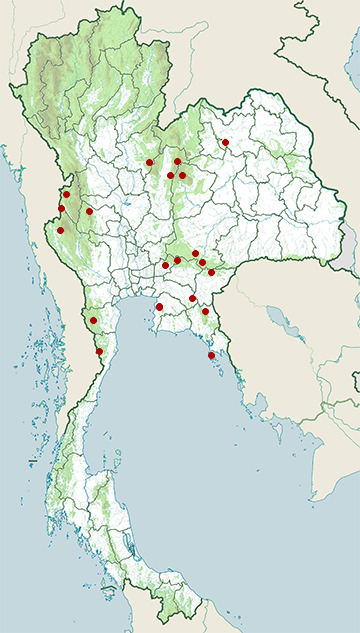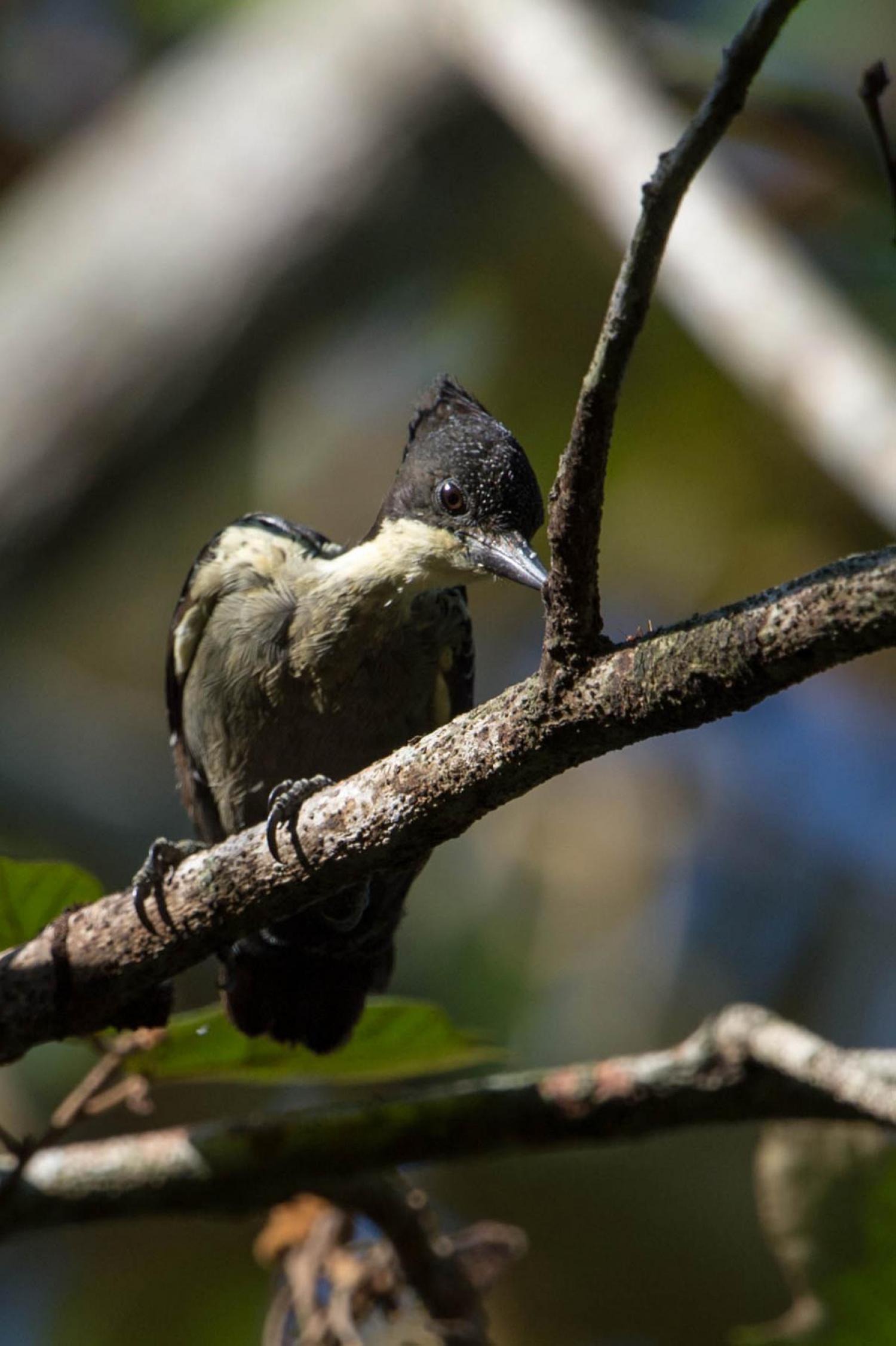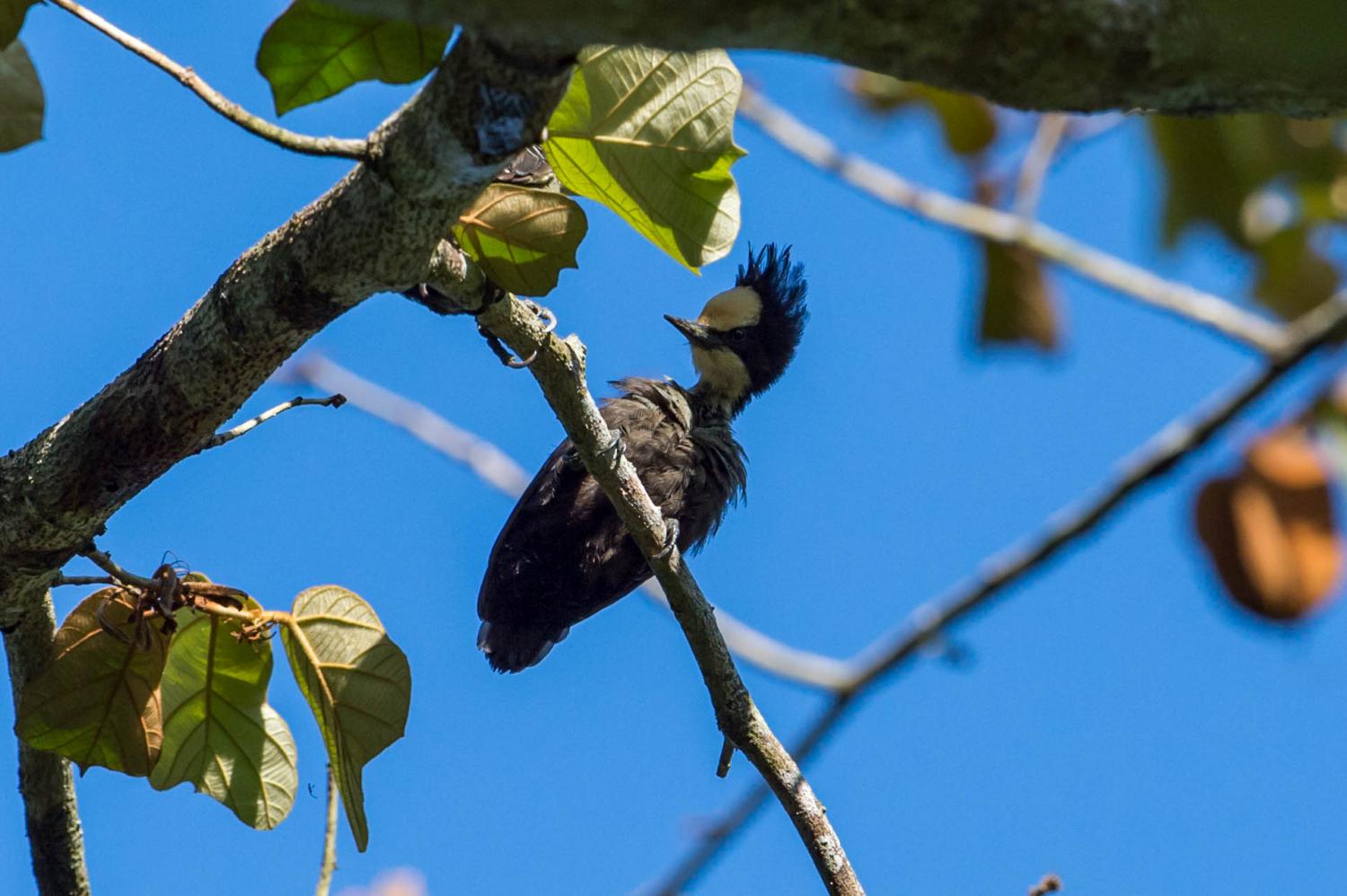Species of Thailand
Heart-spotted woodpecker
Hemicircus canente
René-Primevère Lesson, 1830
In Thai: นกหัวขวานแคระจุดรูปหัวใจ
The heart-spotted woodpecker (Hemicircus canente) is a species of bird in the woodpecker family. It has a contrasting black and white plumage, a distinctively stubby body and a large wedge-shaped head making it easy to identify while its frequent calling make it easy to detect as it forage for invertebrates under the bark of the slender outer branches of trees. They move about in pairs or small groups and are often found in mixed-species foraging flocks. They have a wide distribution across Asia with populations in the forests of southwestern and central India which are slightly separated from their ranges in the Himalayas and Southeast Asia.
Taxonomy
The heart-spotted woodpecker was described in 1832 by the French naturalist René Lesson from a specimen collected from Bago in Myanmar. He coined the binomial name Picus canente. The specific name is from Roman mythology: Canens was a sweet-voiced nymph, her husband was Picus. The species is now placed in the genus Hemicircus that was introduced in 1837 by the English naturalist William John Swainson. The species is monotypic: no subspecies are recognised.
Description
A small, uniquely shaped, black and buff woodpecker with a large crest making the head look large for the short body and tail. Both males and females are predominantly black with heart-shaped black spots on white shoulders with broad white scapular patches and barring of flight feathers. The female has the forehead and crown buffy white while it is black on males. The throat is whitish and the underparts are dark olive grey. A tuft of feathers on the back are specialized and are lipid rich which causes the feathers to stick together in preserved specimens. These special feathers or "fat quills" sometimes make the rump feathers appear buff and may be a form of "cosmetic colouration" and the secretion is said to have a pleasant smell but the functional significance is unknown.
Habitat and distribution
Its natural habitat is subtropical or tropical moist lowland forests. They are found in the Himalayan forests of India, and extend into Bangladesh, Myanmar, Thailand, Laos, Cambodia and Vietnam. Within India, they are also found in the Western Ghats and the forests of central India. A subspecies cordatus based on the description by Thomas C. Jerdon from a specimen from the Western Ghats is not considered distinct and the populations differ slightly in plumage colour and vary clinally in size (the northern birds being larger than those closer to the equator).
Behaviour and ecology
These woodpeckers forage in pairs, sometimes joining mixed-species foraging flocks. They fly from tree to tree in a sharply bounding flight giving a head-heavy appearance. They forage on thin branches and call often. They feed mainly on insects under bark but have been known to peck the pods of Cassia fistula to obtain insect larvae. The calls include a sharp twee-twee-twee (duet call) sometimes leading to a trill of several notes, a nasal ki-yeew and repeated su-sie calls. They drum infrequently during the breeding season, mainly during winter and before the Monsoons. The nest is bored in a dead branch with a narrow 3 to 4 cm diameter opening and the tunnel going down obliquely about 20 cm before widening into a chamber. Nests may sometimes be built in fence posts. The usual clutch is 2 or 3 eggs, which are unmarked white. Ticks of the species Haemaphysalis spinigera have been noted on these birds.
This article uses material from Wikipedia released under the Creative Commons Attribution-Share-Alike Licence 3.0. Eventual photos shown in this page may or may not be from Wikipedia, please see the license details for photos in photo by-lines.
Category / Seasonal Status
BCST Category: Recorded in an apparently wild state within the last 50 years
BCST Seasonal status: Resident or presumed resident
Scientific classification
- Kingdom
- Animalia
- Phylum
- Chordata
- Class
- Aves
- Order
- Piciformes
- Family
- Picidae
- Genus
- Hemicircus
- Species
- Hemicircus canente
Common names
- Thai: นกหัวขวานแคระจุดรูปหัวใจ
Synonyms
- Hemicercus cordatus
Conservation status

Least Concern (IUCN3.1)
Photos
Please help us review the bird photos if wrong ones are used. We can be reached via our contact us page.
Range Map

- Huai Kha Khaeng Wildlife Sanctuary
- Kaeng Krachan National Park
- Khao Ang Rue Nai Wildlife Sanctuary
- Khao Khiao - Khao Chomphu Wildlife Sanctuary
- Khao Laem National Park
- Khao Soi Dao Wildlife Sanctuary
- Khao Yai National Park
- Ko Chang National Park
- Kui Buri National Park
- Mueang Nakhon Nayok District, Nakhon Nayok
- Nam Nao National Park
- Pang Sida National Park
- Phu Foi Lom National Park
- Phu Khiao Wildlife Sanctuary
- Sakaerat Environmental Research Station
- Si Racha District, Chonburi
- Tat Mok National Park
- Thap Lan National Park
- Thung Salaeng Luang National Park
- Thung Yai Naresuan Wildlife Sanctuary
- Umphang Wildlife Sanctuary

